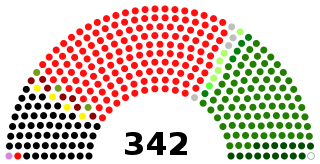Chaudhry Mohammad Ali | |
|---|---|
چوہدری محمد علی | |
 | |
| 4th Prime Minister of Pakistan | |
| In office 12 August 1955 –12 September 1956 | |
| Monarch | Elizabeth II (6 February 1952–23 March 1956) |
| President | Iskander Mirza |
| Governor General | Iskander Mirza (7 August 1955–23 March 1956) |
| Preceded by | Mohammad Ali Bogra |
| Succeeded by | Huseyn Shaheed Suhrawardy |
| Minister of Defence | |
| In office 12 August 1955 –12 September 1956 | |
| Deputy | Akhter Husain (Defence Secretary) |
| Preceded by | General Ayub Khan |
| Succeeded by | H. S. Suhrawardy |
| Minister of Finance | |
| In office 24 October 1951 –11 August 1955 | |
| Deputy | Mumtaz Hasan (Finance Secretary) |
| Preceded by | Ghulam Muhammad |
| Succeeded by | Amjad Ali |
| Federal Secretary | |
| In office 14 August 1947 –24 October 1955 | |
| Finance Secretary of Pakistan | |
| In office 14 August 1947 –12 September 1948 Servingwith Sir Victor Turner | |
| Minister | Ghulam Muhammad |
| Finance Secretary | |
| In office 2 September 1946 –14 August 1947 | |
| Minister | Liaquat Ali Khan |
| Preceded by | Ghulam Muhammad |
| Succeeded by | Sir Victor Turner (as Finance Secretary) |
| President of Pakistan Muslim League | |
| In office 12 August 1955 –12 September 1956 | |
| Preceded by | Mohammad Ali |
| Succeeded by | I. I. Chundrigar |
| Personal details | |
| Born | Chaudhry Muhammad All 15 July 1905 Jullunder, Punjab, British India (Present-day, Jalandhar, Punjab, India) |
| Died | 2 December 1980 (aged 75) DHA Karachi, Karachi, Sindh, Pakistan |
| Citizenship | British India (1905–47) Pakistani (1947–80) |
| Political party | Muslim League (1936-1980) |
| Children | 2 including sons: Khalid and Amjad |
| Alma mater | Punjab University (BSc and MSc in Chem.) |
| Profession | Civil servant, politician |
| Website | Muhammad Ali Official website |
Chaudhry Muhammad Ali (Urdu : چوہدری محمد علی 15 July 1905 – 2 December 1980), best known as Muhammad Ali, was the fourth Prime Minister of Pakistan , appointed on 12 August 1955 until being removed through a successful passage of vote of no confidence motion in the National Assembly on 12 September 1956. [1] [ self-published source? ]
Removal proceedings are administrative proceedings to determine an alien's removability from the United States and his or her eligibility for relief under the Immigration and Nationality Act (INA). Procedural defenses such as collateral estoppel and double jeopardy do not apply to the current removal proceedings, and the burden of proof required in these proceedings differ between lawful permanent residents of the United States and foreign nationals.
A motion of no-confidence, alternatively vote of no confidence, or (unsuccessful) confidence motion, is a statement or vote which states that a person in a position of responsibility is no longer deemed fit to hold that position, perhaps because they are inadequate in some respect, are failing to carry out obligations, or are making decisions that other members feel detrimental. As a parliamentary motion, it demonstrates to the head of state that the elected parliament no longer has confidence in the appointed government. If a no confidence motion is passed against an individual minister they have to give their resignation along with the entire council of ministers.

The National Assembly is the lower house of the bicameral Majlis-e-Shura, which also comprises the President of Pakistan and Senate of Pakistan. The National Assembly and the Senate both convene at Parliament House in Islamabad. The National Assembly is a democratically elected body consisting of a total of 336 members, before 25th ammendment they used to be 342' who are referred to as Members of the National Assembly (MNAs), of which 272 are directly elected members and 70 reserved seats for women and religious minorities. A political party must secure 137 seats to obtain and preserve a majority.
Contents
His credibility is noted for promulgating the first set of the Constitution of Pakistan lost political endorsement from his party when failing to investigate the allegations on vote rigging and the secret defections in favor of the Republican Party. [2]
The Constitution of 1956 was the fundamental law of Pakistan from March 1956 until the 1958 Pakistani coup d'état. It was the first constitution adopted by independent Pakistan. There were 234 articles 13 parts and 6 schedules.
The Pakistani Republican Party was formed in October 1955, by a break away faction of the Muslim League and other politicians supporting the creation of the West Pakistan province, on the instigation of key leaders in the military and civil service. The President of the party was Dr Khan Sahib, Chief Minister of West Pakistan. The Central Parliamentary Leader was Malik Sir Feroz Khan Noon, Prime Minister of Pakistan.


















